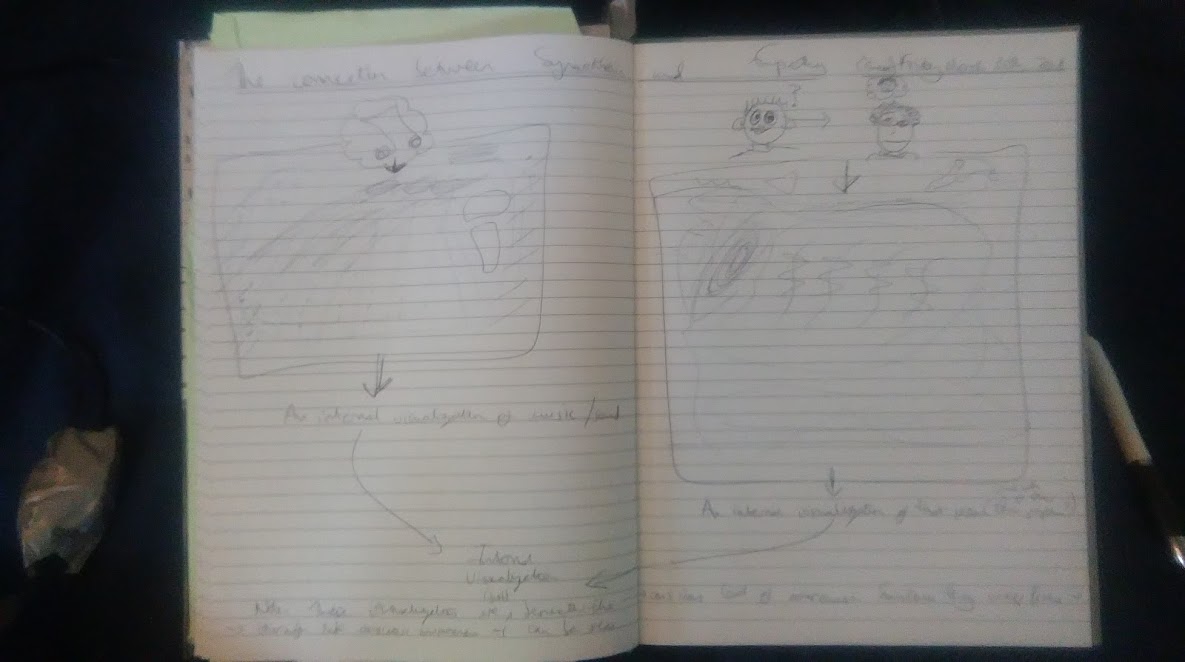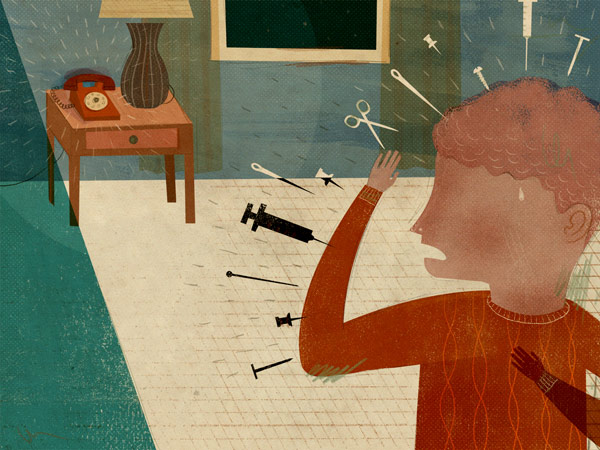
I was writing some notes (blurry pic above) about the links between synaesthesia and empathy then looking for a picture for this blog post. Then I soon came across this article about the links between synaesthesia and poly-rhythms. That page includes a video of a TED-type talk on the subject (the talk is mind blowing!).
I did first see the idea suggested in an article in the Independent newspaper (UK) that featured an interview with Kevin Shields from the band, My Bloody Valentine, talking abut his synaesthesia. Many years ago, I realised that when I experience/enjoy music that I see a visual representation of it subconsciously. But I think I always knew it but never questioned it.
Since then I have kept an eye out for articles and info on the subject. The Independent article above also described how one person was able to use the subconscious visualizations to see a model of that person’s psyche (something like that anyway). This is all sounding quite weird and kooky when I type this but that’s not a problem to me as this is more real to me than most other things.
This would probably be classed as quite an autistic thing. I have often seen reference to links between synaesthesia and autism. (Ref example)
So, it blew me away when I realized that I also use synaesthesia to empathize with a person – I understand and model their “inner being” from this abstract image that is floating in the back of my mind. Maybe it’s evolved to balance out the missing neurotypical empathy function. Or maybe it’s pushed closer to consciousness because of the missing typical functionality related to empathy.
When I say empathy, I’m thinking of an emotional-type empathy – where I can get to understand that person in an emotional/intuitive way.
NOTE: The blurry notes pic above shows a rough representation of how the synaesthesia manifests when I enjoy music plus a rough sketch of how it appears when I am connecting to a person.
UPDATE: Brilliant! Another 5 seconds googling and I’ve finally found a reference to the type of synaesthesia that I have – “much of their repertoire is an exploration of the timbre-to-shape synesthesia that causes Jarvis to involuntarily perceive all sounds as floating abstract visual forms.” This is describing the music of the band Flowers of Hell on Google Play. Read all about them on Rate Your Music and their Wikipedia page and check them out on Soundcloud.

